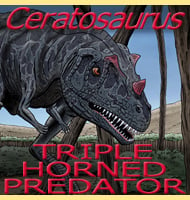Othnielosaurus
In Depth Othnielosaurus is a genus of small ornithopod dinosaur that seems to have been widespread across Central North America during the late Jurassic. Othnielosaurus would have been a bipedal dinosaur relying more upon speed and agility to stay out of the mouths of predatory dinosaurs. Othnielosaurus like other ornithopods were herbivorous dinosaurs that would … Read more
